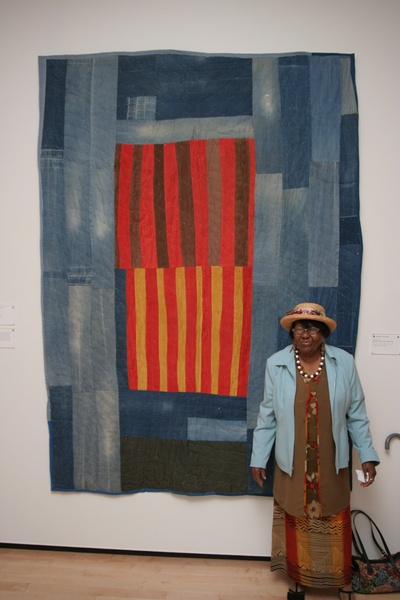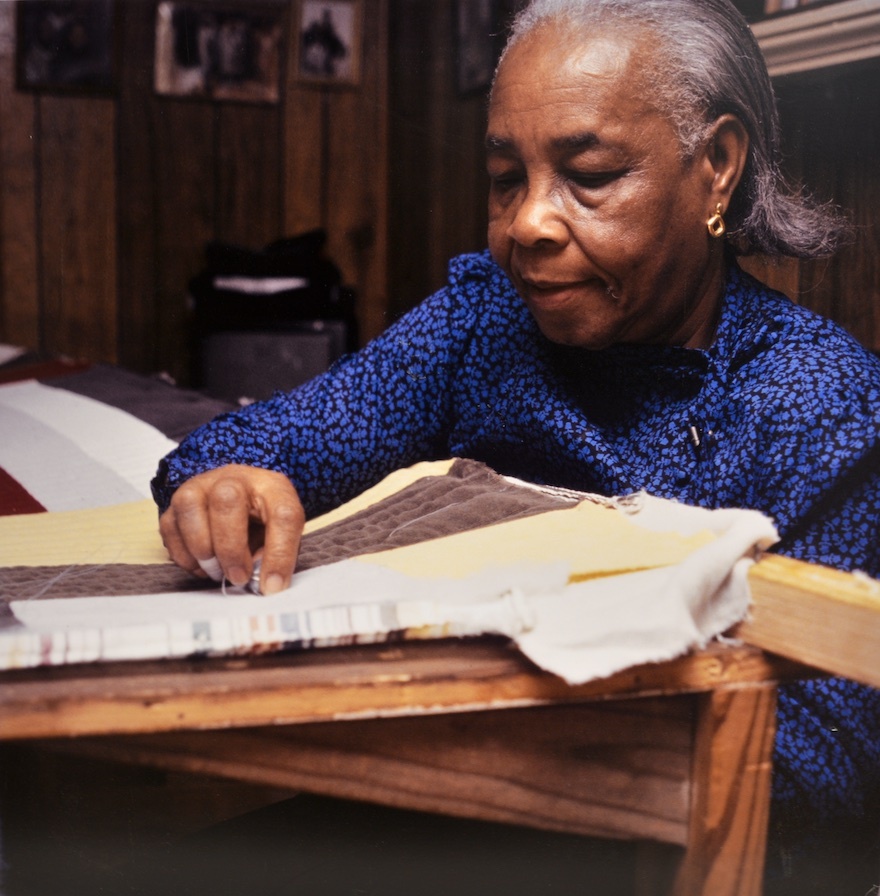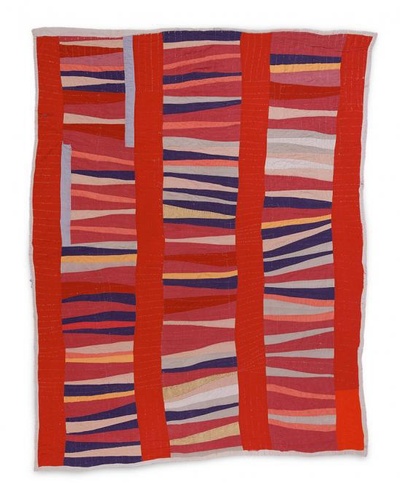History is found in the pages of a textbook—or so I thought! This February, celebrate Black History Month by learning more about the history of Black quilt makers!
Do you know about the (Quilt) Pieces of Black History series happening this month at Nicetown-Tioga and Philadelphia City Institute libraries? During this series, you’ll be able to stop by the libraries and create your own unique paper quilt square that features your favorite Black authors, books written by Black authors, or quotes by Black historical and current figures. At the end of the month, all of our quilt pieces will be joined together to create our own quilt that commemorates Black History Month.
Our collective quilt will come to share history, the history of Black art and culture throughout time, and the history of how we, as Philadelphians, commemorated Black History Month this year. In this instance, history will be shown and shared not through the pages of a textbook, but through individual patches sewn together to make a quilt.
This tradition of quilting extends beyond this Free Library series and into the long tradition of quilt making by Black communities and quiltmakers for centuries, all across the United States. One particular place the tradition of Black quilt making has flourished is Gee’s Bend, Alabama, whose quilting tradition may go as far back as the early 1800s.

In these stretches of isolation, Gee’s Bend is a place where the remarkable tradition of quilt making has not only survived, it has been preserved and passed down from generation to generation. Whereas for some quilt makers, preciseness and exactness in their designs is a priority, the quiltmakers of Gee’s Bend create beautiful designs through improvisation which lead to bold visual displays of patchwork. The Gee’s Bend quilts are renowned for their innovation and are considered to be significant expressions of abstract art and fabric design in U.S. art history.
Many in Gee’s Bend originally used the quilts for practical purposes, such as staying warm in the winter. In 1966, the women quiltmakers of Gee’s Bend and the Episcopalian priest Francis X. Walter founded the Freedom Quilting Bee. The collective sold quilts as a source of income and as a way to support political efforts, at one point inspired by the Civil Rights Movement.
In the past two decades, Gee’s Bend quiltmakers and their skillfully created quilts have received growing recognition. Gee’s Bend quilts have been featured in the Museum of Fine Arts in Houston, the Whitney Museum of American Art, and our very own Philadelphia Museum of Art. In 2006, the U.S. Postal Service issued 10 commemorative stamps with images of Gee’s Bend quilts. Recently, in 2015, the National Endowment for the Arts (NEA) awarded longtime Gee’s Bend quilters Mary Lee Bendolph, Loretta Pettway, and Lucy Mingo the National Heritage Fellowships.
Finding out more about the marvelous quilting traditions in Gee’s Bend is more than just a way to learn something new. It serves as a reminder that history is made all around us, and the most common of objects have deep stories and truths to share with us.
Like me, if you once thought that the only way you could learn about history was through reading a textbook, I invite you to engage with the Free Library’s events this year and celebrate Black History Month through exciting activities. For you, this may mean learning about Black quilting traditions, becoming inspired by the engineering feats of Black inventors and innovators, or hosting a film discussion on movies you’ve yet to watch.
If you want to learn more about Gee’s Bend, I recommend reading Rosenbach Director Kelsey Scouten Bates’s article about the value of studying the foodways of Black communities in the United States. If food is one way you’d like to participate in the festivities of Black History Month, be sure to check out all the food-related Black History events at the Free Library.
However you may choose to celebrate Black History Month this year, there are so many amazing opportunities to learn something transformative and new. Make sure to view the Free Library calendar and find events happening near you.
Sources for the images and information in this blog post:
- “ART REVIEW; Jazzy Geometry, Cool Quilters,” a review of the Gee’s Bend Quilts Exhibition in the Whitney Museum of American Art in 2002. (Don’t have access to The New York Times? Visit our online resources and unlock the New York Times Anywhere database for free access to NYTimes.com.)
- Souls Grown Deep’s article about the Gee’s Bend Quilting Traditions
- National Endowment for the Arts’s "The Quilt of Gee’s Bend: A Slideshow"
- Smithsonian Magazine, "Fabric of Their Lives"
Have a question for Free Library staff? Please submit it to our Ask a Librarian page and receive a response within two business days.


